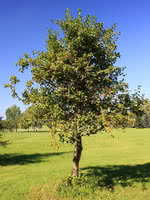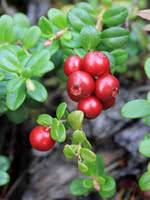Mon-Fri 9am - 5pm Mountain time
Washington Hawthorn vs Bog Cranberry (Lingonberry)
Crataegus phaenopyrum
Vaccinium vitis-idaea
CUSTOM GROW
NOT AVAILABLE THIS SEASON - MIGHT RETURN
Washington Hawthorn is an attractive ornamental shrub that is dense enough to plant as a privacy screen. It produces clusters of white blooms in late spring to early summer.
Washington Hawthorn's red berries last throughout winter, bringing squirrels and birds to your property. In the fall, its foliage turns beautiful orange, scarlet, or purple.
One of the most overlooked trees on the prairies. This tree is often used as rootstock, a wildlife attractor, or a boulevard hedge. Give this one a second look.
This species is also known as one of the more salt-tolerant species for those with saline soils.
Please note: this plant is poisonous to dogs.
Bog Cranberry is a native, ground cover species. These plants generally produce one crop per year in summer. Plants may spread 3 feet in width forming a dense mat which makes it attractive as an ornamental ground cover.
Wild crops of Bog Cranberry are harvested each year in Newfoundland (more than 200,000 lbs/yr). Harvest of wild fruit can no longer keep up with demand. In Europe, 80 million pounds per year of this crop is grown or harvested from the wild.
Bog Cranberry flowers are similar in shape to those of blueberry and may be white or pink in color. These berries are considered to be highly flavored but not as tart as cranberries.
Check out our YouTube video of this plant in the fall: Fall Bog Cranberry.
Note: We use Bog Cranberry for Vaccinium vitis-idaea. This species is also known by many other common names. Please confirm the scientific name to ensure you are ordering the correct plant.
Washington Hawthorn Quick Facts
Bog Cranberry (Lingonberry) Quick Facts
In row spacing: 0.9 m (3 ft)

